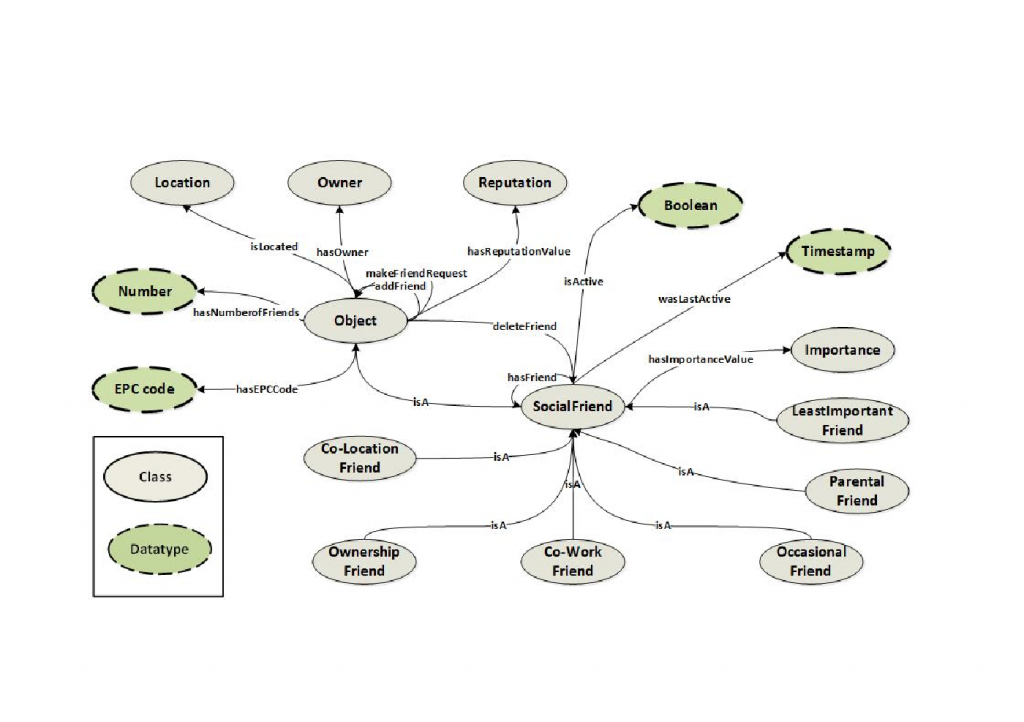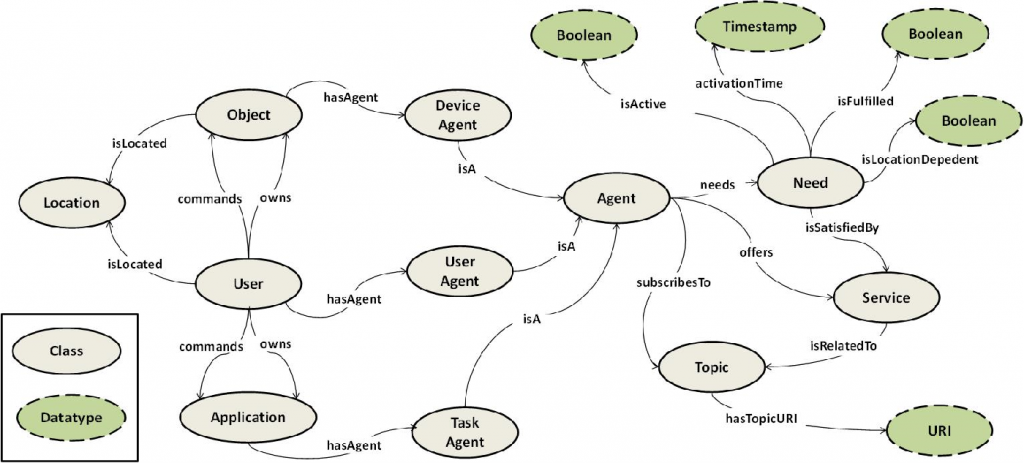Social Smart Object’s Relationships Ontology (SSOR-Ont)
In order to overcome the interoperability problems that emerge from the heterogeneous nature of the IoE entities, we have developed two ontologies: Social Smart Object’s Relationships Ontology (SSOR-Ont) and Smart Object’s Needs and Services Ontology (SONS-Ont).

You can find the Social Smart Object’s Relationships Ontology (SSOR-Ont) here.
Smart Object’s Needs and Services Ontology (SONS-Ont)
SSOR-Ont defines semantically the social relationships of the IoE entities and contains five main classes:
OwnershipFriend: It describes the relationship between smart objects that belong to the same owner.
- Co-WorkFriend: It is the “friendship” established between cooperative smart entities.
- Co-LocationFriend: It depicts the social relationship between smart entities that are located in the same place.
- OccasionalFriend: It is a “friend” that the smart entity “meets” sporadically in a Mobile Ad-Hoc Network (MANET). OccasionalFriend refers to the Social object relationship.
- ParentalFriend: It is a relationship that comes from the manufacturer and is referred to smart objects created in the same production batch.
On the other hand, SONS-Ont has as main class the SIoT Agent that defines the services that are produced by a smart entity, the needs it has and the type of the SIoT agent (i.e. user agent). The Service class is the facility that a smart entity offers. For example, a lamp offers lighting or the air-condition offers cold air. Each Service is mapped to a Topic, empowering the Publish-Subscribe pattern that ASSIST takes advantage of, and has a unique URI. Finally, the Need class responds to the resources a smart entity has to consume for achieving its goal. For example, a Jogging Planner has to be aware of the weather in order to form a jogging schedule for the week. The main reason for exploiting this ontology is to emphasize on the collaboration between smart IoE entities (both physical and cyber physical) and, consequently, to enforce the formation of new co-work relationships between them.

You can find the Smart Object’s Needs and Services Ontology (SONS-Ont) here.
